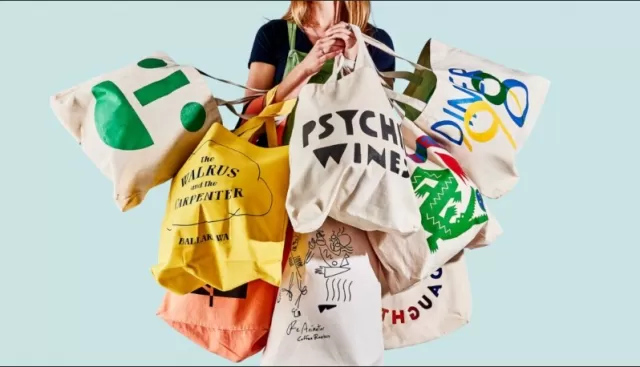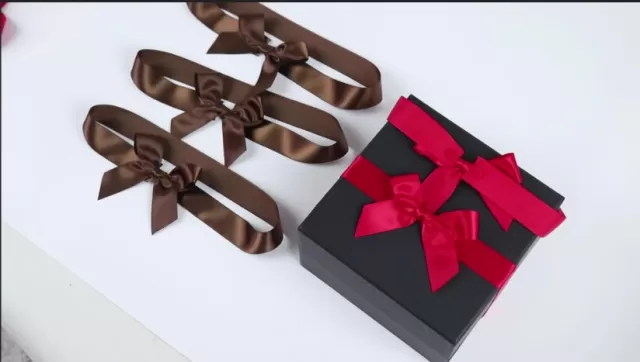Chic and Eco-Friendly Gift Wrapping for a Sustainable Touch. Amidst the joy of celebratory get-togethers, the environmental impact of traditional gift wrapping can be a less-than-merry reality. Andrea Zoellner, co-founder of Keiko Furoshiki reusable gift wrap, sheds light on the staggering statistics: “The United States produces 4.6 million pounds of wrapping paper every year, and half of that—approximately 2.3 million pounds—winds up in landfills.”
Highlighting the year-round impact of the paper industry on biodiversity and local communities, Zoellner emphasizes the heightened relevance During the Holidays. The demand for virgin fiber, particularly for glossy, colorful wrapping paper, increases during the festive season. To counteract this environmental toll, Zoellner proposes eco-minded alternatives that preserve the festive look of perfectly wrapped presents:
Luxurious Fabrics: Wrap gifts in luxurious fabrics, bringing an added touch of elegance to the presentation. The bonus? These fabrics can be reused for years to come.
Regiftable Tote Bags: Embrace reusable fabric tote bags as a stylish and regiftable alternative to traditional wrapping. These bags not only contribute to sustainability but also add an extra layer of thoughtfulness to your gift-giving.
Recyclable Wrapping Paper: Opt for wrapping paper that is not only recycled but also recyclable. Be mindful of the materials used, avoiding glossy coatings, textures, metallic finishes, or glitter, as these elements often render paper non-recyclable.
Reuse Last Year’s Bows: Extend the life of holiday bows by reusing them from the previous year. This simple practice not only reduces waste but also adds a nostalgic touch to your presents.
By incorporating these eco-friendly alternatives, you can infuse your celebrations with a sustainable spirit, redefining the art of gift wrapping for a more environmentally conscious and joyous holiday season.
Elevate Your Gift-Giving: Furoshiki and Fabric Wrapping for a Sustainable Touch

Embrace the art of traditional Japanese furoshiki, versatile sheets of fabric available in various sizes, colors, and patterns, as a unique and eco-friendly way to wrap gifts.
According to experts, such as Zoellner, furoshiki presents an ideal solution not only for its reusable nature but also for its ability to transform the wrapping into an integral part of the gift itself. The absence of tape in the wrapping process makes it not only environmentally conscious but also creatively inspiring.
Furoshiki offers a sustainable alternative to conventional wrapping paper, as the fabric can be repurposed for various uses beyond gift-giving.
However, the beauty of fabric wrapping extends beyond furoshiki; it can involve using non-custom fabrics such as decorative scarves, thrift store finds, or even printed bandanas that resonate with the recipient’s taste. Tea towels add an extra touch of utility to the gift, contributing to its overall charm.
To ensure the success of fabric wrapping, experts recommend selecting fabric with enough flexibility for easy tying yet durability to withstand multiple uses.
Size is a crucial factor, too—finding the right balance ensures that you can create a visually appealing wrap without excess fabric distracting from the overall effect. In doubt, err on the larger side, as creative wrapping techniques can turn any surplus fabric into delightful bows and decorative knots, enhancing the beauty of the gift presentation.
Join the movement toward sustainable and thoughtful gift-giving with the Timeless Elegance of fabric wrapping.
Choose Sustainability: Tips for Sourcing Eco-Friendly Wrapping Paper
In the pursuit of environmentally conscious gift-giving, selecting wrapping paper with a reduced carbon footprint is a significant step.
According to Zoellner, wrapping paper made from recycled materials carries approximately half the carbon footprint of new paper. However, the optimal choice is wrapping paper that not only contains recycled content but is also fully recyclable.
Contrary to a common misconception, not all wrapping paper is recyclable.
Paper with glossy coatings, textured surfaces, metallic finishes, or glitter is typically not recyclable. Improper disposal of non-recyclable wrapping paper in recycling bins might lead to the entire load being labeled as trash, depending on local regulations.
For those seeking recyclable options, Zoellner recommends unwaxed paper and kraft paper as straightforward and customizable choices.
Kraft paper, in particular, is easily accessible and can be recycled up to seven times, provided it remains free of excessive paint, stickers, or glitter paint. While it may be a slightly higher investment, Zoellner suggests considering paper that uses soy-based ink and is sourced from sustainably managed forests, such as those endorsed by the Forest Stewardship Council (FSC), an organization dedicated to promoting socially and environmentally responsible forestry practices.
To determine if paper is waxed, Zoellner suggests crumpling it into a ball—if it bounces back, it is likely not recyclable. By making informed choices, you can contribute to a more sustainable and eco-friendly approach to gift wrapping.
Chic and Sustainable: Elevate Your Gift-Giving with Pretty Tote Bags

When faced with odd-shaped or oversized gifts, the go-to solution often lies in using a gift bag.
However, taking it up a notch involves wrapping your gift in a reusable fabric bag, suggesting a level of thoughtfulness and sustainability. As suggested by Zoellner, you can purchase these bags or, for a personalized touch, craft them yourself using fabric scraps.
Encouraging recipients to pass along these fabric bags with subsequent gifts adds an extra layer of eco-friendliness to the gesture.
For a quick and easy no-sew version, Zoellner recommends utilizing hemming tape to bind the fabric, offering a hassle-free alternative for those who may not have sewing skills.
Additionally, investing in nylon or cotton totes, preferably made from recycled materials, provides an excellent and stylish alternative. Zoellner highlights the longevity of these totes, emphasizing that they can continue to serve a purpose beyond the initial gift, ensuring a sustainable and eco-friendly cycle for years to come.
By embracing pretty tote bags as a wrapping solution, you not only add a touch of elegance to your gift presentation but also contribute to a more sustainable gift-giving culture, fostering a cycle of reuse that aligns with environmental consciousness.
Eco-Friendly Wrapping: Make the Switch from Clear Tape to Washi Tape
In the pursuit of sustainable gift wrapping, one simple yet impactful change is to bid farewell to clear plastic tape, which is non-recyclable and can compromise the recyclability of paper.
Zoellner suggests opting for an eco-conscious alternative—washi tape or another paper-based option—as a replacement.
Washi tape, in particular, stands out as a commendable choice.
It is often manufactured using eco-friendly processes, featuring a rubber adhesive and biodegradable paper backings. Beyond its environmental benefits, washi tape comes in a variety of patterns, adding a delightful and visually appealing touch to your gift presentations.
This switch not only reduces your environmental footprint but also enhances the overall aesthetics of your wrapped gifts.
By making this small but impactful change, you contribute to a more sustainable gift-wrapping practice, aligning with a commitment to reduce plastic waste and foster eco-friendly alternatives.
Elevate your wrapping game with the charm of washi tape, proving that style and sustainability can seamlessly coexist in your gift-giving endeavors.
Revamp Your Wrapping Style: Sustainable Alternatives to Bows and Ribbons

Steer clear of glossy paper bows and ribbons that contribute to non-recyclable waste and opt for eco-friendly alternatives to elevate your gift presentation.
As pointed out by Zoellner, most bows and ribbons share the same plastic-paper composite as conventional wrapping paper, making them unsuitable for recycling.
Consider embracing raffia as a more sustainable ribbon option.
Raffia, a natural fiber derived from the leaves of the raffia palm tree, is biodegradable and adds a touch of rustic charm to your wrapped gifts. Additionally, you can take a hands-on approach to sustainability by crafting your own recycled and recyclable tags, bows, and adornments using paper.
This DIY approach not only reduces waste but also allows for a personalized and creative touch to your gifts.
Taking it a step further, Zoellner suggests the elegance of fabric wrapping as an excellent alternative, eliminating the need for additional ribbons and bows altogether.
By adopting these sustainable practices, you contribute to a reduction in plastic waste, promote biodegradability, and infuse a sense of creativity into your gift-wrapping routine. Make your gifts memorable not only for the thought within but also for the eco-conscious elegance on the outside.
*The information is for reference only.